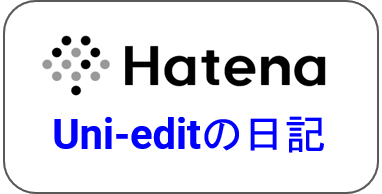難易度:上級
校正チームによれば、英語原稿の校正でよく直さなければならないのが、ハイフンの使い方だそうです。ハイフンを正しく使えるようになると、英文にぐっとこなれた印象が生まれ、込み入った記述もクリアーになります。
ハイフンは、「-」のような形をしたとても短い横棒にすぎませんが、被修飾語を明確にする上で大きな役割を果たし、文意をはっきりとさせます。英語の学術文章では、ハイフンが幅広く用いられます。
ハイフンは、おそらくコンマと並び、 書き手にとって最も悩みの種となる句読点法です。その理由は、ハイフンに類似するものが話し言葉に存在しないからかもしれません。それは、印刷物における必要性からのみ生まれてきたものなのです。ハイフンの本質は、読み手に曖昧さを与えないようにすることにあります。
では、一般的な用法と誤用をいくつか見てみましょう。
ルール:「ly」で終わる副詞にはハイフンをつけない
(正)The highly toxic substance was handled carefully. (訳:その猛毒物質は慎重に取り扱われた)
(誤)The highly-toxic substance was handled carefully.
ルール:名詞の後にくる複合語にはハイフンをつけない
複合修飾語が修飾される名詞の後にくる場合、たいていの場合それをハイフンでつなげてはいけません。名詞の前にくる場合はハイフンをつけるような複合語であっても、このルールに従います。
(正)The proposal was well documented. The professor said: "This really is a well-documented proposal." (訳:その企画書は良くまとめられていた。教授も「これはとても良くまとまった企画書だ」と言った。)
(誤)The proposal was well-documented.
(正)He has a 42-foot-long boat. (訳:彼は42フィートのボートを所有している。)
(正)His boat is 42 feet long. (訳:彼のボートは42フィートある。)
(誤)His boat is 42-feet-long.
行為の繰り返しを表すためにハイフンを使う
(正)We re-applied the coating. (我々は再度塗装を施した。)
これは、 塗装が二度にわたって施されたという意味です。ハイフンによって、「re」が行為の繰り返しを意味しているということが読み手に明確に伝わります。
数字での使用
21から99までの数字と、分数を書くときにハイフンを使います。
(正)He is one-quarter Irish. (訳:彼にはアイルランド人の血が1/4入っている。)
(正)Twenty-one people participated in the experiment. (訳:21人がその実験に参加した。)
複合語の保留
同様の複合語が続くとき、ハイフンをプレイスホルダーとして使って、最後以外の複合語の末尾を省略することがあります。
(正)The third- and fourth-grade teachers met with the parents.
(訳:3年生、4年生の先生が保護者面談を行った。)
(正)Both full- and part-time employees will get raises this year.
(訳:今年は正社員にもアルバイトにも昇給があります。)
(正)We don't see many 3-, 4-, and 5-year-old children around here.
(訳:この辺りでは、3、4、5歳の子どもはあまり見かけません。)
(正)Follow standard pre- and post-operative procedures.
(訳:通常の術前・術後方法に従うこと。)
接頭辞をつける
大文字で始まる単語の前に接頭辞がくるときや、接頭辞自体が大文字である場合、ハイフンを使います。「self-」や「all-」、「ex-」といった接頭辞には、ほとんどの場合ハイフンをつける必要があります。また、単語の先頭と同じ文字で接頭辞が終わる場合、多くの場合(ただし常にではない)ハイフンを使います。
(正)A-frame(枠組A), I-formation(I構造), self-control(自制心), anti-intellectual(反知性主義的な), de-emphasize(重きを置かない), non-English(英語以外)
(例外)unnatural(不自然), coordinate(座標), cooperate(協力する) (雑誌や出版社によっては、こうした単語にハイフンをつけるかどうかについて独自ルールを定めていることもあります。)
アイコンをクリックして、ヒントをダウンロードする:  ハイフンの正しい使い方(パートB)
ハイフンの正しい使い方(パートB)
Uni-edit English Writing Tip: How to use hyphens correctly (Part B)
Level of difficulty: Advanced
Editors at Uni-edit often need to correct the use of hyphens during English editing of manuscripts. Correct use of hyphens shows the author's advanced command of English and helps to make detailed descriptions clear.
The hyphen, which is a very short horizontal line that looks like this '-', is very helpful to disambiguate modified words, which will make your writing clearer. Hyphens are used often in all academic writing in English.
Hyphens cause writers more trouble than any other form of punctuation, except perhaps commas. This may be because the hyphen has no analogue in speech; it is punctuation created purely by the needs of print. The point of the hyphen is to avoid ambiguity for the reader.
Let's look at some common uses and misuses:
Rule: Do not hyphenate when the adverb ends in 'ly'
Correct: The highly toxic substance was handled carefully.
Incorrect: The highly-toxic substance was handled carefully.
Rule: Do not hyphenate compounds that come after the noun
Don't hyphenate most compound modifiers if they occur after the noun being modified, even if hyphenating them before the noun.
Correct: The proposal was well documented. The professor said: "This really is a well-documented proposal."
Incorrect: The proposal was well-documented.
Correct: He has a 42-foot-long boat.
Correct: His boat is 42 feet long.
Incorrect: His boat is 42-feet-long.
Use a hyphen for repeated actions
Correct: We re-applied the coating.
This means the coating was applied for a second time. The hyphen makes it clear for the reader that the ‘re’ means a repeated action.
Writing some numbers
Use a hyphen for writing numbers twenty-one to ninety-nine and fractions.
Correct: He is one-quarter Irish.
Correct: Twenty-one people participated in the experiment.
Suspended Compounds
With a series of nearly identical compounds, we sometimes delay the final term of compound until the last instance, allowing the hyphen to act as a kind of placeholder.
Correct: The third- and fourth-grade teachers met with the parents.
Correct: Both full- and part-time employees will get raises this year.
Correct: We don't see many 3-, 4-, and 5-year-old children around here.
Correct: Follow standard pre- and post-operative procedures.
Adding certain prefixes
When a prefix comes before a capitalized word or the prefix is capitalized, use a hyphen. The prefixes self-, all-, and ex- nearly always require a hyphen, and when the prefix ends with the same letter that begins the word, you will often use a hyphen, but not always.
Correct: A-frame, I-formation, self-control, anti-intellectual, de-emphasize, non-English
Special cases: unnatural, coordinate, cooperate (a journal or publisher may have house rules on whether or not to hyphenate these words)
END OF TIP



